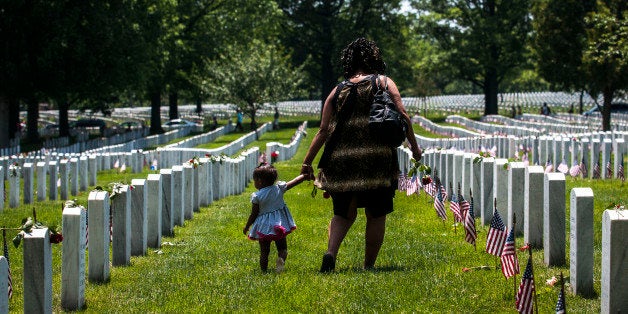
Sometimes the present can define the past or at the very least offer a better way to understand it.
The recent political campaign #BlackLivesMatters has in the span of three short words been able to articulate a claim that I tried to make in my book of over 100,000 words.
As the nation begins to celebrate Memorial Day, an event that began in response to the mass mortality caused by the Civil War, I am reminded of the fact that many newly emancipated slaves died from disease and suffering during the Civil War and Reconstruction, but their death was rarely acknowledged and often not even recorded.
In my book, Sick From Freedom, I tried to document the pain and suffering of formerly enslaved people who had to bury their children because their was no food to feed them during the war. I tried to capture the feeling of despair when countless freed slaves begged the army, Northern reformers, and anyone who would listen for help when a smallpox epidemic ravaged through their communities. I tried to describe the unimaginable anguish that one black mother felt when there was no place to bury her dead child and she was afraid that the Union army, who liberated her, would leave her son's corpse on a wharf -- where she witnessed the bodies of other dead freed children gnawed on by rats.
I told these grim stories in order to make formerly enslaved people's suffering and death visible within a historical memory of the Civil War that overlooked their plight.
Despite my effort, many historians continue to see only white soldiers' suffering and death during the war. Each Memorial Day, they only commemorate their death in honor of reuniting the nation. But what about those who did not wear the Union blue or Confederate grey but died in the same war often alongside of white soldiers? How we might remember their death and suffering?
The popular political moniker #BlackLivesMatter offers one refrain to this continuing erasure. #BlackLivesMatter aptly calls for what historian Nell Painter deems "a fully loaded cost accounting" of the deaths of black people during the Civil War.
Rhetorically, #BlackLivesMatter exemplifies how the most powerful messages relating to both the past and present can be conveyed in only a few words. I am not the only historian who has recognized the power of this hashtag. Over the past year, many others have employed it in order to articulate a similar concern about the representation of black people in history. In her review of Martha Hodes' book, Mourning Lincoln, in The New York Times, Harvard historian Jill Lepore extolls Hodes for showing how #BlackLivesMatter in her study of the cultural responses to Lincoln's assassination.
Meanwhile, a number of historians have taken the adage #BlackLivesMatter to remind the American public of how the legacy of slavery continues to shape and inform the current political moment. In the American Prospect, historians Daina Ramey Berry and Jennifer L. Morgan brilliantly traced how the death of Eric Garner and others are tied to the history of slavery. According to Berry and Morgan, slavery commoditized black people and made them valuable to the nation; yet when slavery ended, black people no longer had the same monetary value and thereby their lives no longer mattered. #BlackLivesMatter became a way for Berry and Morgan to demonstrate how we continue to "live in the embedded afterlife of slavery."
Similarly in the immediate aftermath of the Ferguson protests, historian Erica Armstrong Dunbar insightfully likened the pain that Leslie McSpadden, the mother of Michal Brown, experienced to enslaved women who "lost child after child to a system that considered their offspring disposable property."
The campaign #BlackLivesMatter has enabled many historians to not only remind the American public of the violent history of enslavement in the United States but to also capture the political sentiment and ideological commitment that has driven the last fifty years of scholarship on slavery and make it more visible to the American public.
Like much of African-American history, the mantra #BlackLivesMatter reveals how theories and knowledge about Black history emerged from political struggles; some of the most astute and trenchant critiques of history developed first within black communities and then eventually made their way into the academy. Unlike other forms of knowledge production that emanate from the ivory tower and then dissipate to the mainstream public, concepts propelling African-American history often began on the streets and then eventually (or not) make their way into the academy.
As the nation celebrates Memorial Day, let us not forget that #BlackLivesMatter, and that the present can define the past.
--
Jim Downs is the author of Sick from Freedom: African-American Illness and Suffering during the Civil War and Reconstruction (Oxford University Press, 2012). He is an associate professor of history at Connecticut College; in 2015-16, he will be an Andrew W. Mellon New Directions Fellow at Harvard University.
